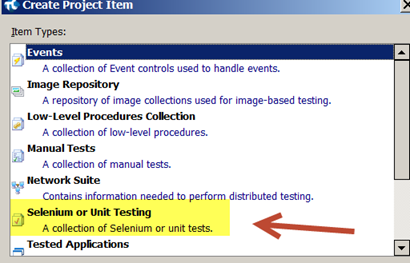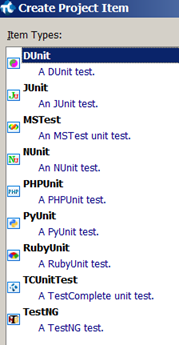A few days ago, SmartBear released TestComplete version 10.5, which includes two new features that will make its users' Christmas very merry.
I recently interviewed Masha Kozinets, the director of product management for TestComplete, and Jeffrey Martin, a sales engineer. We discussed all the new features in the latest version of TestComplete, so if you want to learn about all the latest updates don't miss TestTalks episode 32.
The top two new features that really caught my attention were TestComplete's ability to now integrate with Selenium, and its enhanced support for unit testing.
TestComplete Selenium WebDriver Support
So far, SmartBear is the only major tool vendor that I'm aware of, that has embraced open-source tools. In fact, one of their most popular API testing tools, SoapUI, has an open source version. They've proven this yet again with a new feature that allows users to call Selenium testing from within TestComplete. This new functionality allows for the inclusion of Selenium tests into your TestComplete test project. You can also run them as part of your automated testing process and analyze your test results.
Integrate Selenium with TestComplete
In order to integrate Selenium with TestComplete you'll need to:
- Have the unit testing framework and Selenium webdriver installed and configured on your test execution machine.
- If you are using Maven or a specific web browser driver like IEDriverServer.exe, they also need to be installed and configured.
- You'll also need to specify the path to the unit testing framework that your tests use within TestComplete.
- In TestComplete, simply right click on your project and select Add>New Item
- From Create Project Item, select the Selenium or unit testing option.

- Right click on the project item you just created, select your unit testing project type and configure.
Once everything is configured and installed, you're good to go.
Why using Selenium in TestComplete is Cool
Jim Evans, one Selenium's contributors, advised the folks at SmartBear on what features he felt TestComplete might create in order to enhance the Selenium testing experience; things like test reporting, which is not a feature priority for Selenium.
Although Selenium only supports browser applications, the integration with Test Complete allows users to automate pretty much any technology — all within one tool. I realize that can currently be done with the tool vendors' own web automation capabilities, but with more and more companies expanding their use of Selenium, support for it is becoming even more critical.
I think this is a move we're going to see a lot of the other major tool vendors making, especially once the W3C WebDriver standard becomes official and all the main browser vendors start implementing their own versions of Selenium Driver.
Unit Testing in TestComplete

Being able to call unit tests really is a step towards freeing automation from QA. The more you can automate efficiently the better. In order to do that you need to expand the team beyond QA, which is one reason why the ability to call a developer's unit testing from within Test Complete is so cool.
Now, I'm aware that you can get most of these functionalities using a more developer-centric approach using just the standard open-source tool within Eclipse or IntelliJ, but one point that was brought up in my interview with Masha and Jeff was that this approach is actually alienating many more high-level testers from being able to participate in test automation. Forcing all your testers to use Eclipse, for instance, is not going to make for a very productive test team.
Using a tool like TestComplete makes it easier for non-technical people to contribute to the automation effort, and also allows extremely technical developers to continue to focus on lower level testing efforts — all within one IDE.
TestComplete supports xUnit frameworks like:
- JUnit
- TestNG
- PyUnit
- Ruby's Test::Unit
- PHPUnit
- NUnit.
Using this feature is as simple as right clicking and choosing the Add Unit Tests option.
With the release of TestComplete 10.5, I believe SmartBear is positioning themselves to be the one tool to which all engineers can go for all their automation efforts. With the new features, SmartBear's vision seems to be that users should only need one tool for all their automation testing. Look for more and more of these types of TestComplete integrations from SmartBear in the future.
To hear more about TestComplete and QaComplete listen in to TestTalks episode 32.






Being a user of TestComplete this is interesting news to hear. I downloaded the v10.5 package for upgrade, seems I have some more things to work with now.
As all my script code is in VBScript it will be interesting to see which language I can use with the Selenium interface. Thanks for the heads up on this Joe.
Thanks, Joe, would be great to see what you think on another newcomer to the automation tools list – automated website testing tool Testomato from http://www.testomato.com
Interesting – I’ll check it out.
Hi, can I record the steps through this tool, because I know the language but I am not expert
I don’t think you can – you should email the folks at Smartbear to dbl check. If not you might want to ask them to put it on their future enhancement request. Smartbear is known for loving to respond to customer request.